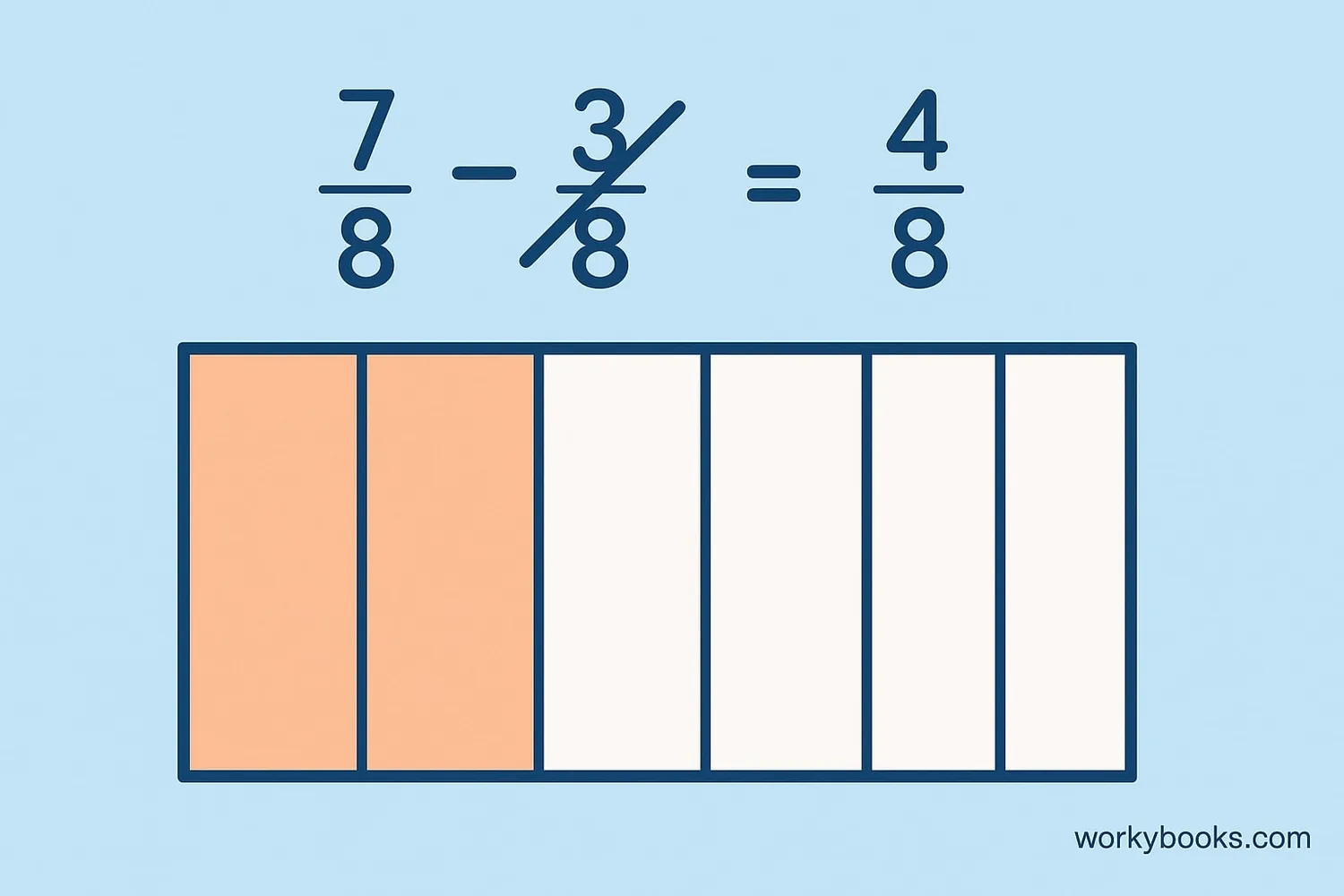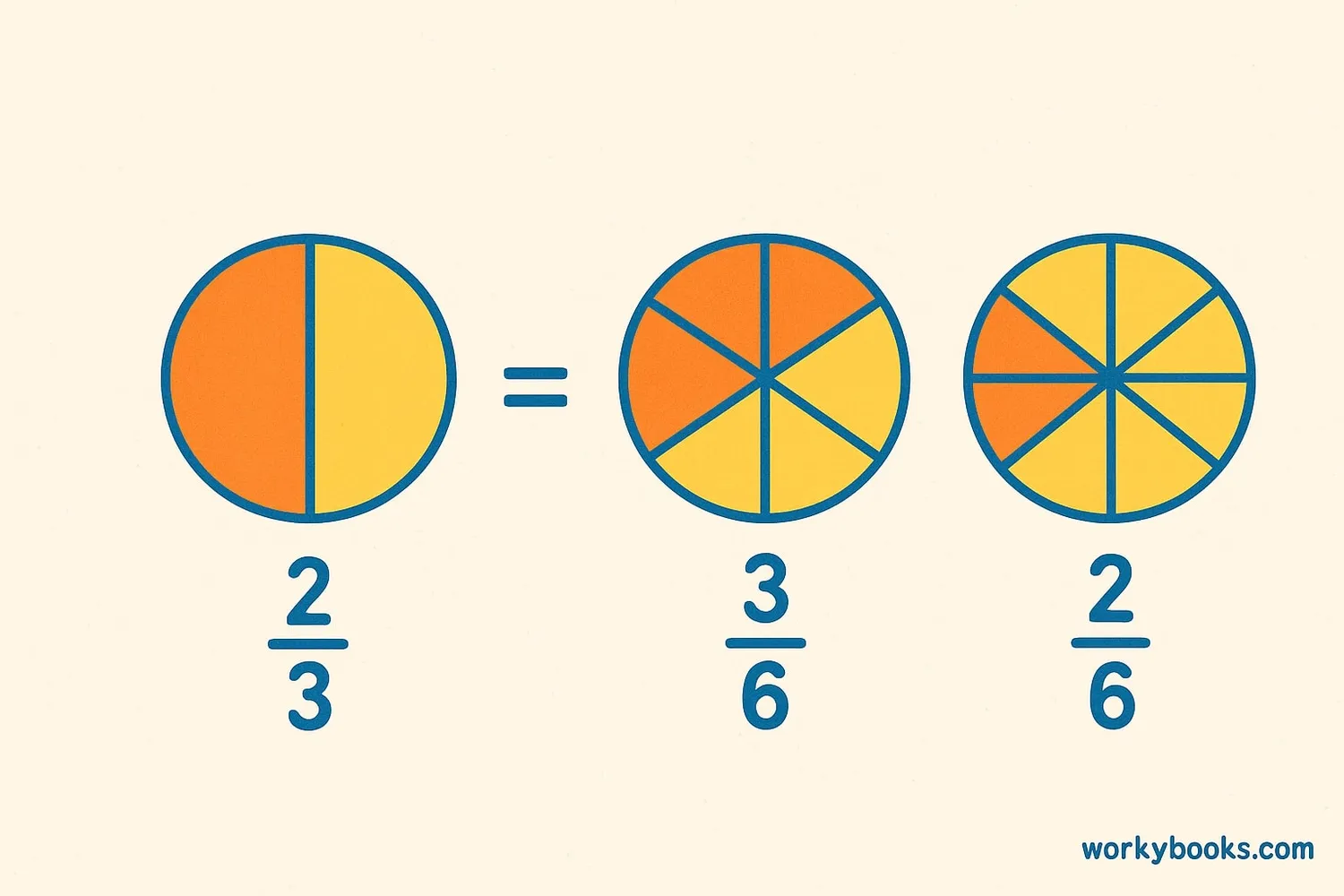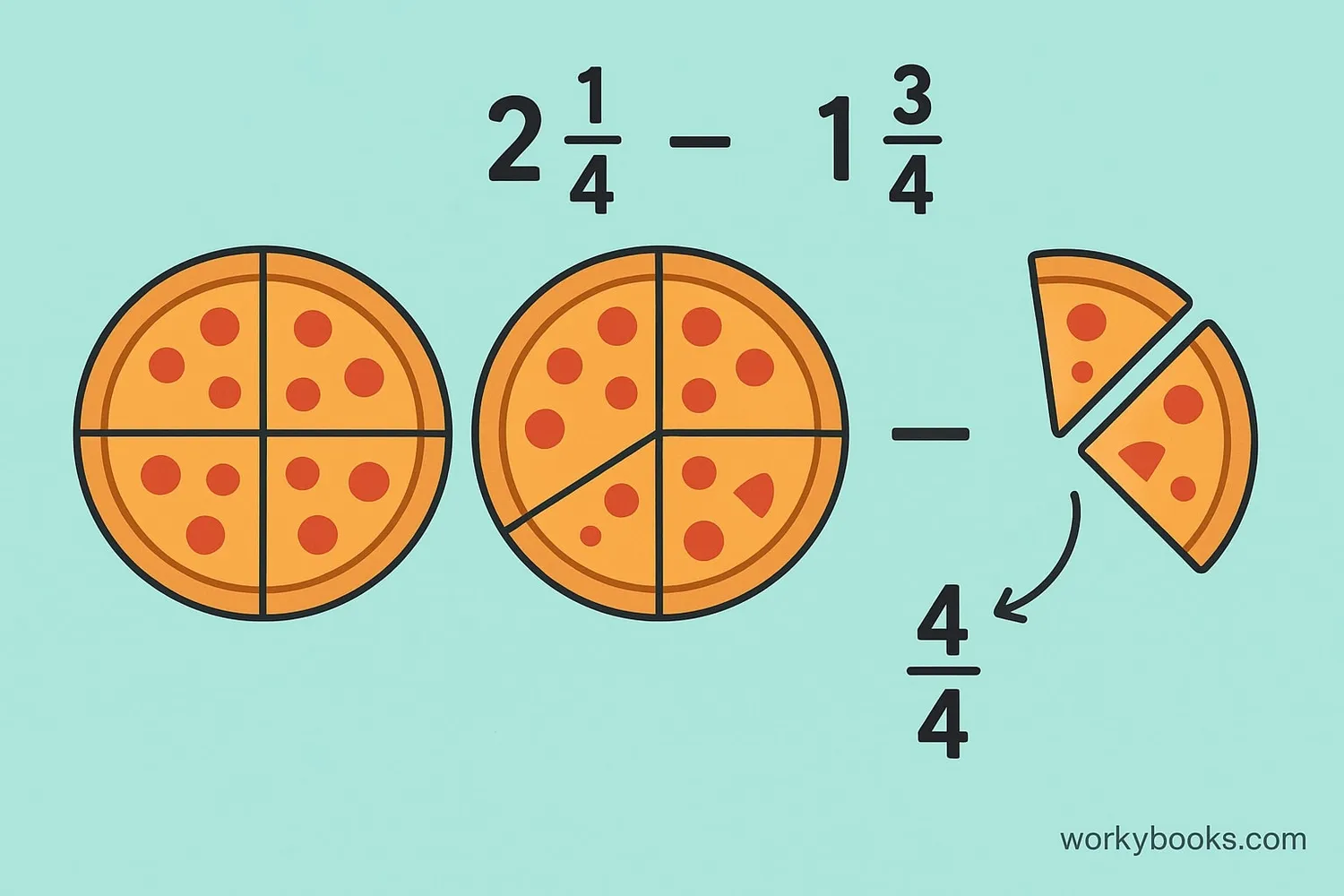Subtracting Fractions - Definition, Examples, Quiz, FAQ, Trivia
Learn to subtract fractions with easy explanations, visual examples, and practice activities
What is Subtracting Fractions?

Subtracting fractions means finding the difference between two fractional values. Just like subtracting whole numbers, we're taking away one part from another. But fractions have special rules because they represent parts of a whole.
The most important thing to remember is that we can only subtract fractions directly when they have the same denominator (the bottom number). When denominators are different, we need to make them the same before subtracting.
Here's the basic formula for subtracting fractions with the same denominator:
Subtraction Formula
When denominators are the same, subtract the numerators and keep the denominator.
Key Concept
The denominator tells us how many equal parts make a whole. When subtracting fractions, we must always compare parts of the same size.
Subtracting Fractions with Like Denominators

When fractions have the same denominator, subtraction is straightforward. We simply subtract the numerators (top numbers) and keep the denominator the same.
Let's look at an example:
Example: Subtract 35 from 45
Step 1: Check that denominators are the same (both are 5)
Step 2: Subtract numerators: 4 - 3 = 1
Step 3: Keep the denominator: 5
Result: 15
Practice Example
Subtract: 78 - 38
Remember
Always simplify your answer to its lowest terms when possible. For example, 4/8 can be simplified to 1/2.
Subtracting Fractions with Unlike Denominators

When denominators are different, we can't subtract directly. We need to find a common denominator - a number that both denominators can divide into evenly. The best common denominator is usually the Least Common Multiple (LCM) of the denominators.
Steps for subtracting fractions with different denominators:
Practice Example
Subtract: 23 - 14
Conversion Tip
To convert a fraction to have a new denominator, multiply both numerator and denominator by the same number.
Subtracting Mixed Numbers

Mixed numbers combine whole numbers and fractions. To subtract mixed numbers:
Practice Example
Subtract: 3 14 - 1 34
Key Concept
When subtracting mixed numbers, if the fractional part of the first number is smaller, remember to borrow 1 from the whole number and convert it to the fraction's denominator.
Fraction Subtraction Quiz
Test your fraction subtraction skills with this 5-question quiz. Choose the correct answer for each question.
Frequently Asked Questions
Here are answers to common questions about subtracting fractions:
Fraction Trivia
Discover interesting facts about fractions:
Ancient Fractions
The ancient Egyptians used fractions as early as 1800 BC. They used unit fractions (fractions with numerator 1) and could express any fraction as a sum of unit fractions.
Fractions in Nature
Fractions appear everywhere in nature! The patterns on seashells, the arrangement of leaves on stems, and the spirals of pinecones all follow fractional mathematical patterns.
Fractions in Space
Astronomers use fractions to measure distances in space. The distance to the nearest star is about 4.24 light years, which is 4 and 24/100 light years.
Fraction Records
The largest fraction with a single-digit numerator and denominator is 9/1, but the smallest positive fraction is 1/∞ (though infinity isn't a number!).


